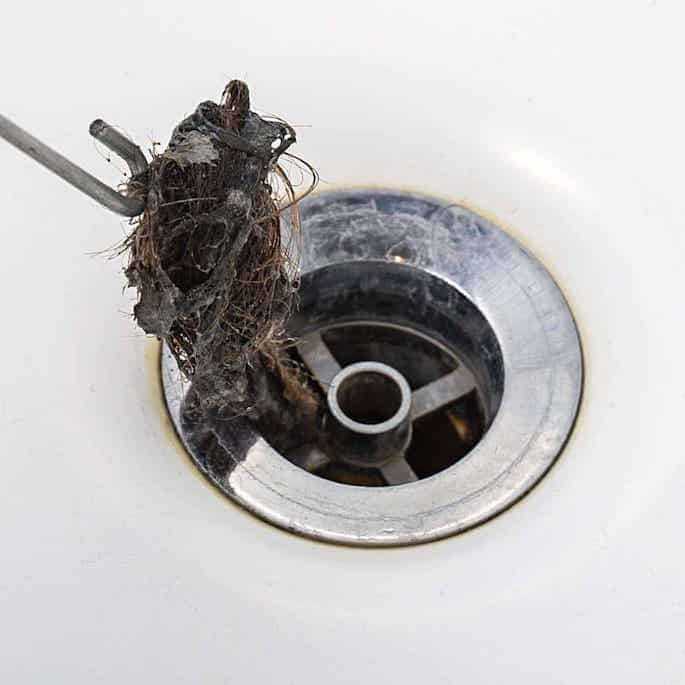Introduction:
A soothing bath can turn into a frustrating experience when faced with a slow-draining bathtub. Hair accumulation is a common culprit behind these clogs, leading to water pooling at your feet. In this comprehensive guide, we will walk you through a detailed step-by-step process to effectively unclog your bathtub drain, ensuring a smooth and enjoyable bathing experience. From assembling the necessary tools to adopting preventive maintenance measures, we’ve got all the details covered.
I. Gather Necessary Tools and Materials:
To start your journey toward a clear drain, gather the essential tools and materials. A drain snake or auger is crucial for dislodging stubborn hair clogs, while a plunger provides a more straightforward approach.
Equip yourself with rubber gloves, a bucket for water removal, boiling water to break down the clog, and a combination of baking soda and vinegar for a natural DIY drain cleaner.
II. Remove Excess Water:
Begin the unclogging process by using a bucket to remove any standing water from the bathtub. It’s crucial to work with a dry surface to facilitate better suction and manipulation of tools.
III. Remove and Clean the Drain Stopper:
Locate and remove the drain stopper carefully. Clean any visible hair or debris clinging to it, as this can contribute to the clogging issue. Set the drain stopper aside for reinstallation later in the process.
IV. Use a Plunger:
The trusty plunger is an effective tool for dislodging hair clogs. Create a tight seal around the drain and perform a series of plunging motions. The pressure generated helps break up the hair, gradually restoring proper water flow. Repeat the plunging process as needed until you observe improved drainage.
V. Employ a Drain Snake or Auger:
For more persistent clogs, the drain snake or auger becomes your go-to tool. Carefully insert it into the drain and maneuver it to break up and pull out hair and debris. Exercise caution to avoid causing damage to the drain pipes during this process.
VI. DIY Drain Cleaner:
Boiling water serves as an initial step to soften the clog. Follow this with a natural DIY drain cleaner made by combining baking soda and vinegar. Pour this mixture down the drain, allowing it to sit for 15-30 minutes. Finish by flushing the drain with hot water to clear any remaining debris.
VII. Rinse and Test:
Run hot water down the drain to rinse away loosened debris. Test the effectiveness of your efforts by allowing water to flow freely. If necessary, repeat the entire process until the drain is completely clear.
VIII. Reinstall the Drain Stopper:
Once you’ve successfully unclogged the drain, clean the drain stopper thoroughly before securely reinstalling it in its original position. This step ensures the prevention of future clogs by minimizing the entry of hair and debris.
IX. Preventive Maintenance Tips:
To keep your bathtub drain consistently clear, consider adopting preventive maintenance measures. Install a drain strainer to catch hair and debris before it reaches the drain. Regularly clean both the drain stopper and strainer, and perform preventive maintenance monthly to prevent the gradual buildup of hair and other materials.
X. FAQs:
Q1: Can I use chemical drain cleaners?
A: It’s advisable to avoid chemical drain cleaners as they can be harsh on pipes and may pose safety risks. Opt for natural methods to protect your plumbing and the environment.
Q2: How often should I perform preventive maintenance?
A: Aim for monthly preventive maintenance, including cleaning the drain stopper and using a drain strainer, to prevent the accumulation of hair and debris.
Q3: What if the clog persists after multiple attempts?
A: If your efforts are unsuccessful, it may be time to seek professional plumbing assistance. Persistent clogs could indicate underlying issues that require expert attention.
Conclusion:
By following this comprehensive guide and incorporating preventive maintenance tips, you can reclaim the joy of a smoothly flowing bathtub drain. Regular care is the key to preventing future clogs and ensuring a stress-free bathing routine. Don’t let hair clogs disrupt your relaxation—take charge of your plumbing and enjoy the benefits of a clear and efficient bathtub drain.

A group of home improvement enthusiasts and bathroom design experts, combines in-depth knowledge and a shared passion to deliver engaging, informative content that guides readers through the world of bathroom innovation and style.

Leave a Reply